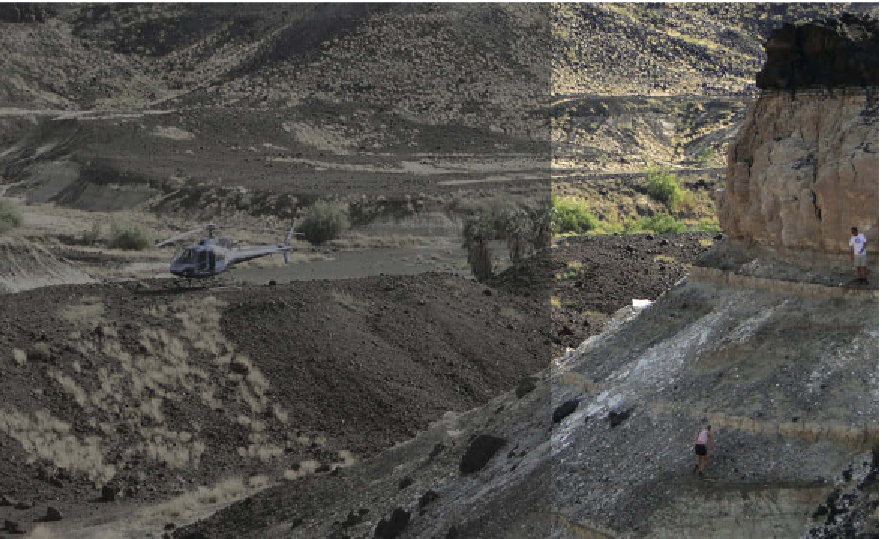Geoscience Reference
In-Depth Information
4 Bivariate Statistics
Middle Pleistocene lake-sediment sequence in
the Suguta Valley of northern Kenya, consisting
mostly of diatomite, clays and silts with
intercalated volcanic ashes. The dating of the
ash layers and the typical sedimentation rates
of deposits can be used to create an age-depth
model for the sequence. This age model is in
turn required to reconstruct environmental,
and hence climatic, variations through time
within the area.
4.1 Introduction
Bivariate analysis aims to understand the relationship between two variables,
x
and
y
. Examples are the length and width of a fossil, the sodium and
potassium content of volcanic glass, and the organic matter content along
a sediment core. When the two variables are measured on the same object,
x
is usually identii ed as the
independent variable
and
y
as the
dependent
variable
. If both variables have been generated in an experiment, the variable
manipulated by the experimenter is described as the independent variable.
In some cases neither variable is manipulated and neither is independent.
h e methods of bivariate statistics aim to describe the strength of the
relationship between the two variables, either by a single parameter such
as Pearson's correlation coei cient for linear relationships or by an equation
obtained by regression analysis (Fig. 4.1). h e equation describing the
relationship between
x
and
y
can be used to predict the
y
-response from any
arbitrary
x
within the range of the original data values used for the regression
analysis. h is is of particular importance if one of the two parameters is
dii cult to measure. In such a case, the relationship between the two variables
is i rst determined by regression analysis on a small training set of data. h e

